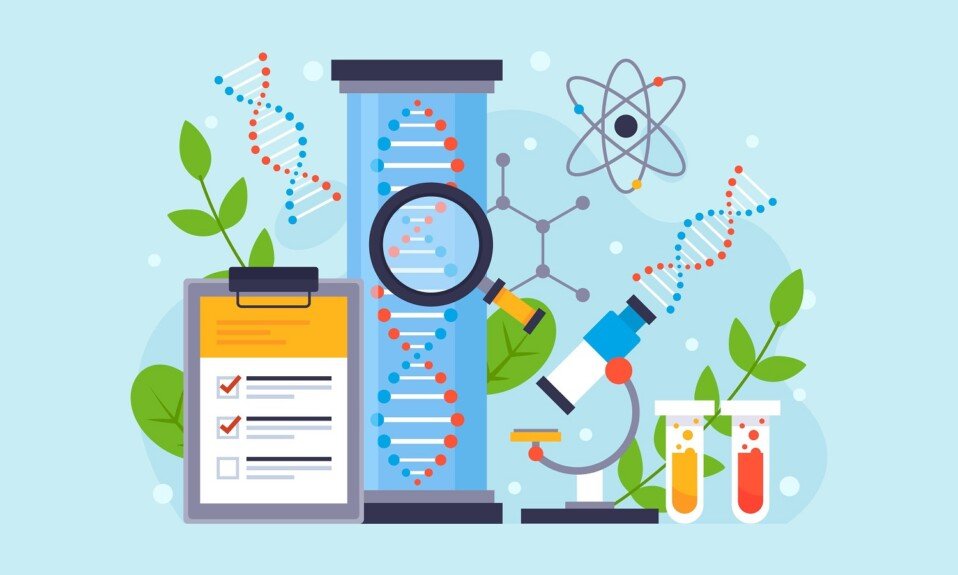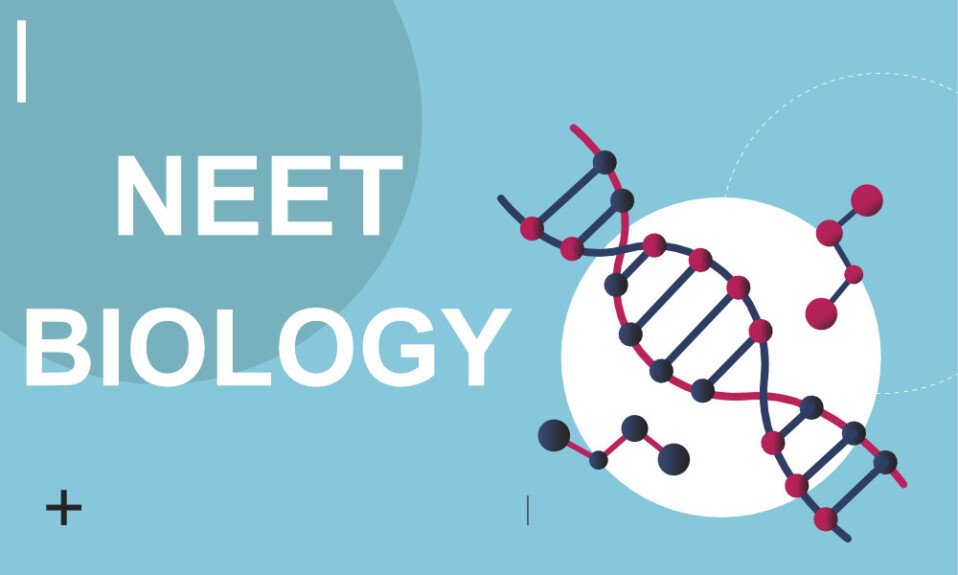1.Western Blotting is a technique used for detection of
(a). Specific DNA in the sample
(b). Specific protein in the sample
(c). Specific RNA in the sample
(d). Specific glycolipid in the sample
Answer:(b). Specific protein in the sample
2.Diauxie is
(a). Microbiological die off
(b). Growth factors
(c). Stage wise uptake of nutrients
(d). Simultaneous uptake of nutrients
Answer:(c). Stage wise uptake of nutrients
3.Which of the following statements is not correct?
(a). Bacteria possess only one type of RNA polymerase
(b). Attenuation is a regulatory process by bacteria to control the initiation of transcription
(c). Repressor binds to the operator
(d). Bacterial genes are polycistronic
Answer:(b). Attenuation is a regulatory process by bacteria to control the initiation of transcription
4.Which of the following bacterial operon is not controlled by attenuation?
(a). Arabinose
(b). Tryptophan
(c). Leucine
(d). Histidine
Answer:(a). Arabinose
5.Which of the following is the most appropriate definition of operator?
(a). A non-coding, regulatory DNA sequence that is bound by RNA polymerase
(b). A non-coding regulatory sequence that is bound by repressor protein
(c). A DNA-binding protein that regulates gene expression
(d). A cluster of genes that are regulated by a single promoter
Answer:(b). A non-coding regulatory sequence that is bound by repressor protein
6.Which of the following statements is true about lac operon in E.coli?
(a). Promoter is the binding site for the lac repressor
(b). Operon is only switched on in the absence of lactose in the growth medium
(c). Beta galactosidase is only produced in large quantities when the lac repressor is bound to the operator
(d). Lac operon mRNA is a polycistronic mRNA
Answer:(d). Lac operon mRNA is a polycistronic mRNA
7.Which of the following does not affect the formation of hybrid DNA?
(a). Ionic strength
(b). Pressure
(c). Temperature
(d). Homologous DNA
Answer:(b). Pressure
8.What is a probe?
(a). Chemically synthesized DNA
(b). Purified DNA
(c). Fragmented DNA duplex
(d). Either purified or synthesized single stranded DNA
Answer:(d). Either purified or synthesized single stranded DNA
9.In how many ways can a DNA be labelled?
(a). 2
(b). 3
(c). 4
(d). 5
Answer:(a). 2
10.The process by which a probe is used to screen a library is known as
(a). Hybridization
(b). Southern blotting
(c). Colony hybridization
(d). Western blotting
Answer:(c). Colony hybridization
11.A system in which presence of a small molecule results in synthesis of enzymes is called
(a). Inducible System
(b).Repressible System
(c). Diauxic system
(d).Co-repression
Answer:(a). Inducible System
12.rDNA technology can be used in agriculture to:
(a). Generate new hybrid strains
(b).improve disease resistance
(c). improve yield
(d).all of the above
Answer:(d).all of the above
13.Which of the following statements regarding the regulation of trp Is the expression by attenuation correct?
(a). Rapid translation of the leader peptide prevents completion of mRNA transcript
(b).Rapid translation of the leader peptide allows completion of mRNA transcript
(c). The leader peptide sequence encodes enzymes required for tryptophan synthesis
(d).The leader peptide sequence contains no tryptophan residues
Answer:(a). Rapid translation of the leader peptide prevents completion of mRNA transcript
14.Which of the following is not required in sequencing?
(a). Restriction digestion
(b). Cloning
(c). Electrophoresis
(d). PCR
Answer:(a). Restriction digestion
15.What are the base specific cleavage sites used in Maxam-Gilbert sequencing?
(a). A, T, G, C
(b). C. T. A+G, T+C
(c). A, G, A+T, G+C
(d). G, C, A+G, C+T
Answer:(d). G, C, A+G, C+T
16.Which of the following techniques is used in DNA fingerprinting?
(a). Western blotting
(b). Eastern blotting
(c). Southern blotting
(d). Northern blotting
Answer:(c). Southern blotting
17.Labelled antibodies are used to detect
(a). The presence of particular DNA molecule in Southern blotting
(b). the presence of particular RNA molecule in Southern blotting
(c). the presence of particular protein molecule in Southern blotting
(d). the presence of particular protein molecule in Western blotting
Answer:(d). the presence of particular protein molecule in Western blotting
18.Which of the following technique does not use electrophoresis for separation of biomolecules?
(a). Dot blotting
(b). Northern blotting
(c). Southern blotting
(d). Western blotting
Answer:(a). Dot blotting
19.Amino benzyloxy methyl filter paper is commonly used for transfer in
(a). Northern blotting
(b). Western blotting
(c). Southern blotting
(d). Dot blotting
Answer:(a). Northern blotting
20.Probe is a
(a). Protein for detecting a specific DNA molecule
(b). Short piece of labeled DNA which are complementary to the nucleic acid strand to be detected
(c). Short piece of labeled DNA or RNA which are complementary to nucleic acid strand to be detected.
(d). None of these
Answer:(c). Short piece of labeled DNA or RNA which are complementary to nucleic acid strand to be detected
21.Polymerase used for PCR is extracted from
(a). E. coli
(b). Homosapiens
(c). Thermus aquaticus
(d). Saccharomyces cerevisiae
Answer:(c). Thermus aquaticus
22.How many DNA duplex are obtained from one DNA duplex after 4 cycles of PCR?
(a). 4
(b). 8
(c). 16
(d). 32
Answer:(c). 16
23.How many structural genes are present in trp operon of E. coli?
(a).3
(b).5
(c).6
(d).4
Answer:(b).5
24.Which of the following is a mismatch?
(a). a Polymerase –A. Taq polymerase
(b). b. Template –B. Double stranded DNA
(c). c. Primer –C. Oligonucleotide
(d). d.Synthesis –D. 51 → 31 direction
Answer:(b). b. Template –B. Double stranded DNA
25.Which of the following is the chemical nucleotide sequencing method?
(a). Sanger method
(b).Maxam-Gilbert method
(c). Edmans method
(d).Automated sequencing method
Answer:(b).Maxam-Gilbert method
26.At what temperature does denaturation of DNA double helix takes place?
(a). 60o
(b). 54o
(c). 74o
(d). 94o
Answer:(d). 94o
27.BamH1 recognises 6 base pairs of DNA in palindromic DNA sequence. If the first part of the sequence is given below, what is the rest of it? ↓28C A A 31
(a). 51C A A 31
(b). 51A A C 31
(c). 51T T G 31
(d). 51G T T 31
Answer:(b). 51A A C 31
29.A student was attempting to make cDNA that would code for protein Y. They began with an isolated and amplified sample of the target post-transcriptional mRNA, and all the tools required to complete the task. However, at the end of the experiment the student was left with a molecule containing ribonucleotides. What most likely went wrong?
(a). The student forgot to add DNA polymerase
(b). The student added RNA polymerase instead of DNA polymerase
(c). The cloning vector already transcribed DNA
(d). The student forgot to add reverse transcriptase
Answer:(b). The student added RNA polymerase instead of DNA polymerase
30.A student adds Taq polymerase, nucleotides and primer to a test tube. What procedure are they most likely going to do next?
(a). Southern Blotting
(b). Microarray Hybridization assay
(c). Gel Electrophoresis
(d). Polymerase Chain Reaction
Answer:(d). Polymerase Chain Reaction
31.PCR is an excellent method of generating copies of target DNA. If a single piece of double stranded DNA is put into a PCR machine,how many dsDNA segments will be there after 3 rounds?
(a). 8 segments, with the two original strands paired
(b). 8 segments, with the two original strands on different segments
(c). 16 segments, with the two original strands on different segments
(d). 16 segments, with the two original strands paired
Answer:(b). 8 segments, with the two original strands on different segments
32.What is not true about genetically modified Bt crops?
(a). The technique has been applied to several species of crops
(b). The source organism for the gene is soil bacterium
(c). The transferred gene exists in several allelic forms
(d). Bt brinjal has been commercially exploited
Answer:(c). The transferred gene exists in several allelic forms
33.Which organism among the following was not used in genetic engineering programme leading to development of Golden rice?
(a). E. coli
(b). Erwinia uredovora
(c). Agrobacterium tumefaciens
(d). Narcissus pseudonarcissus
Answer:(a). E. coli
34.Plasmids are used as cloning vectors for which of the following reasons?
(a). Can be multiplied in culture
(b). Self—replication in bacterial cells
(c). Can be multiplied in laboratories with the help of enzymes
(d). Replicate freely outside bacterial cells
Answer:(b). Self—replication in bacterial cells
35.The DNA fragments have sticky ends due to
(a). Endonuclease
(b). Calcium ions
(c). Unpaired bases
(d). Free methylation
Answer:(a). Endonuclease
36.The vaccines prepared through rDNA technology are
(a). Third generation vaccines
(b). Second generation vaccines
(c). First generation vaccines
(d). None
Answer:(a). Third generation vaccines
37.For the construction of DNA library what is the range of genomic DNA that has to be cloned into the vector?
(a). Less than 100 bases
(b).100 to 1000 bases
(c). Less than 100 to mega bases
(d).Less than 10 bases
Answer:(c). Less than 100 to mega bases
38.——-experiment is based on the principle of transforming two
markers (genes) together in the recipient for gene mapping.
(a). Interrupted mating
(b).Co-transduction
(c). Co-transformation
(d).transformation
Answer:(c). Co-transformation
39.The RNA strand in the RNA-DNA hybrid is removed by
(a). RNAse
(b).RNase-H
(c). Nuclease
(d).Protease
Answer:(b).RNase-H
40.PCR technique was invented by
(a). Karry Mullis
(b). Boyer
(c). Sanger
(d). Kohn
Answer:(a). Karry Mullis
41.The first transgenic plant to be produced is
(a). Brinjal
(b). Tobacco
(c). Rice
(d). Cotton
Answer:(b).Tobacco
42.The expression of a transgene in the target tissue is identified by a
(a). Transgene
(b). Promoter
(c). Enhancer
(d). Reporter
Answer:(d). Reporter
43.Which bacterium is used in the production of insulin by genetic engineering?
(a). Saccharomyces
(b). Rhizobium
(c). Escherichia
(d). Mycobacterium
Answer:(c). Escherichia
44.A human cDNA library contains
(a). DNA for specific human proteins
(b). DNA for virtually all of the human proteins in vectors
(c). Cannot be used to obtain human genes because it would be radioactive
(d). None of the above
Answer:(d). None of the above
45.What enzymes form covalent bonds between restriction fragments?
(a). DNA primase
(b). DNA helicase
(c). DNA polymerase
(d). DNA ligase
Answer:(d). DNA ligase
46.It is theoretically possible for a gene from organism to function in
other organisms? Why?
(a). All organism have the same genetic code
(b). All organisms are made up of cells
(c). All organisms have ribosomes
(d). All organisms have tRNA
Answer:(a). All organism have the same genetic code
47.Current applications of gene cloning include
(a). Cleaning up toxic wastes
(b). Instilling pest resistance plants
(c). Manufacturing human growth hormone
(d). All of these
Answer:(d). All of these
48.Plasmids are important in Biotechnology because they are.
(a). vehicle for the insertion of recombinant DNA into bacteria
(b). Recognition sites on recombinant DNA strands
(c). Provirus incorporated into the host DNA
(d). Surfaces for protein synthesis in eukaryotic recombinants
Answer:(a). vehicle for the insertion of recombinant DNA into bacteria
49.An expression vector
(a). always contains an origin of replication
(b). usually contain a gene that confers antibiotic resistance to the hot
(c). always contains DNA segments for the regulation of mRNA production
(d). all of the above
Answer:(d). all of the above
50.The DNA molecule to which the gene of insert is integrated for cloning is called
(a). Carrier
(b).Transformer
(c). Vector
(d).Conjugator
Answer:(c). Vector




